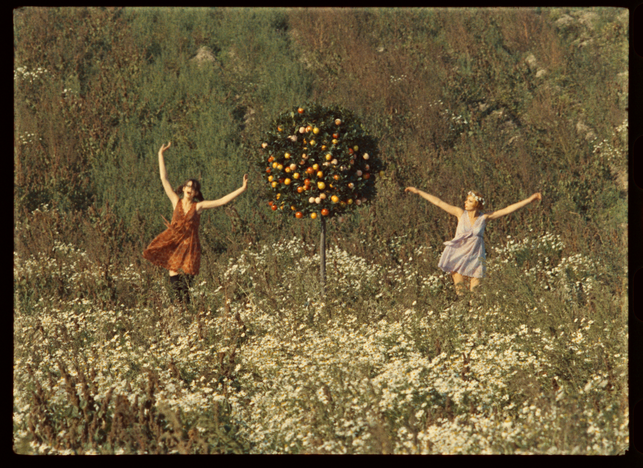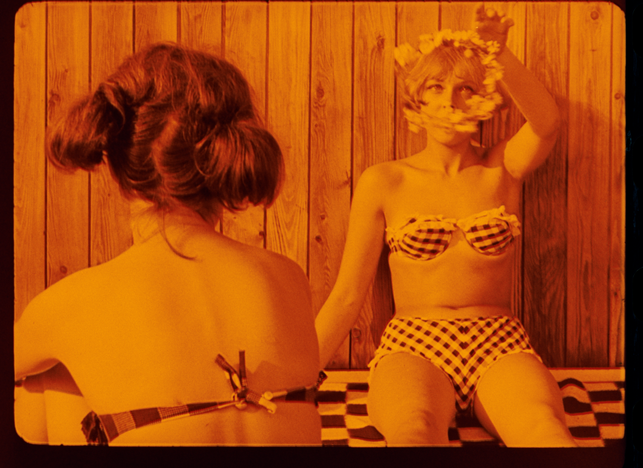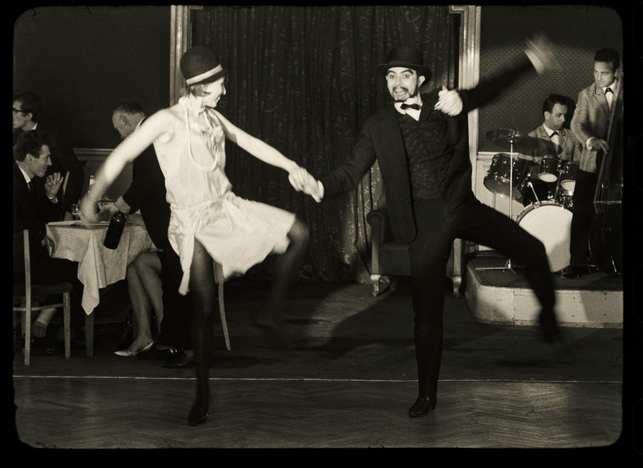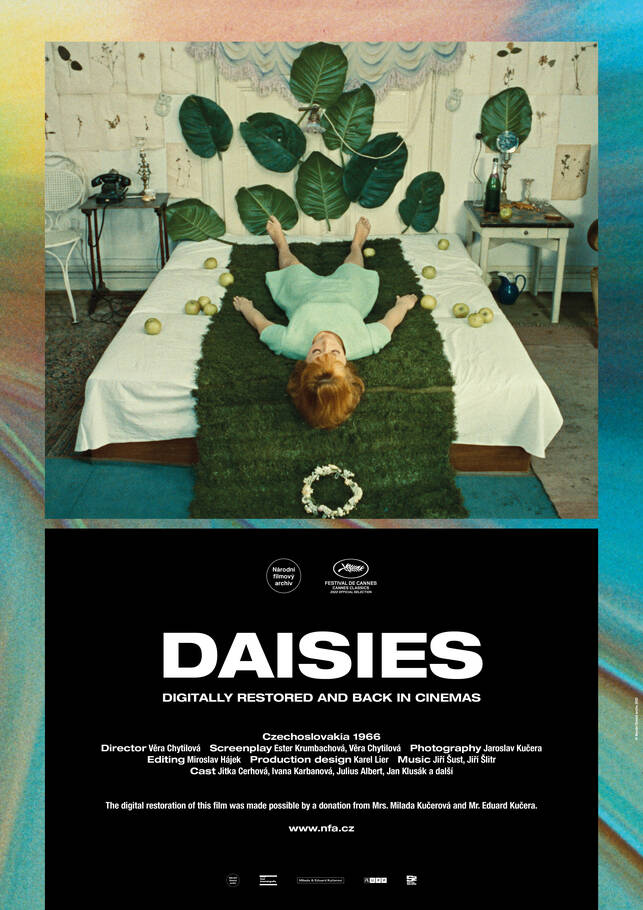Summary
One of the most celebrated films of the 1960s Czechoslovak New Wave, Sedmikrásky (Daisies, 1966) is director Věra Chytilová’s second feature film. Made when Chytilová was 37-years-old, this timeless, vibrant classic continues to inspire new generations of viewers. A provocative film, it tells the story of two young women who decide to mirror the decadent, hedonistic world in which they live. Removed from the political reality of the time in which it was made, Daisies are nonetheless a quintessential representation of the mid-sixties aesthetic. Marie I and Marie II have no qualms with traditional morality and social norms, carelessly bamboozling the men attracted to their carefree exuberance – mostly older men. The avariciousness of these models sees them exploiting the wallets of their spellbound male suitors, and just trying to enjoy any kind of fun that comes their way. One gauge of their escapades is the game “matters/ doesn’t matter”, which both swaggering Maries play as they blindly proceed from one adventure to the next. But their “spoilt” nature – as highlighted at the end through a moral underscored by Chytilová – is just innocent rebellion set against the backdrop of a troubled modern world. Yet the protagonists of Daisies – playfully embodied by non-professional actresses Jitka Cerhová and Ivana Karbanová – primarily serve as a demonstration of female liberation in accordance with the feminist trends of the times. At the same time, the two Maries stand for – albeit in extreme form – Chytilová’s representation of female characters battling to make it in a man’s world. As such, they join the ranks of similar female trailblazers seen in Chytilová’s O něčem jiném (Another Way of Life, 1963); Hra o jablko (Apple Game, 1976); and Pastí, pastí pastičky (Traps, 1998). What makes Daisies so unique in terms of both form and meaning is its showcasing of the close collaboration between Chytilová, costume designer, set designer and co-writer Ester Krumbachová, and cinematographer Jaroslav Kučera. The film’s “dangerous” nature only emerged once it was edited together. This meant that though lauded by critics across the globe, and hailed at a multitude of film festivals, the film found itself subject at home to official criticism and censorship (it became one of the few Czechoslovak films to be taken up by the Czechoslovak parliament, and later ended up “shelved” in a “normalisation” era vault).
Read more




















